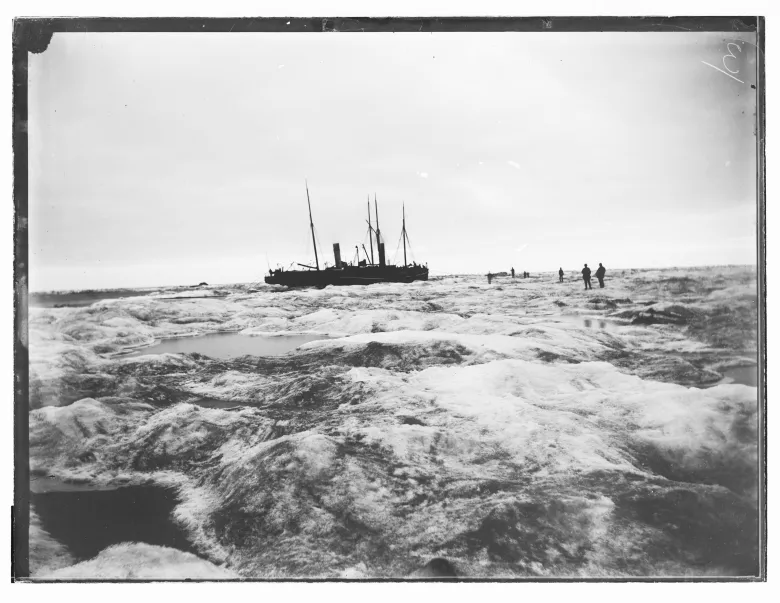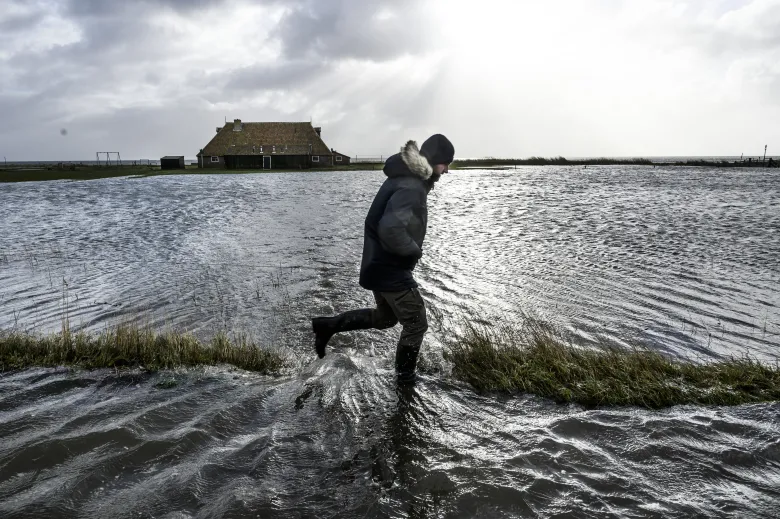National Maritime Museum raises a red flag: Focus on the global impact of melting ice and the rising sea levels in exhibitions Scramble for the Arctic and Rising Tide
The climate crisis has an immense effect on the Arctic region. The melting ice opens up the Arctic sea routes, increasing the commercial and military interest in the region. This is in stark contrast to 400 years ago, when the Arctic region was still an unexplored, impenetrable, and mythical place. From 4 October 2019 until 10 May 2020, National Maritime Museum will be showcasing two new exhibitions that address these topics. The Arctic Scramble exhibition illustrates the process of Dutch expansion into the Arctic region. The spirit of exploration, exploitation, science, and nationalism played a commanding role in this expansion in which the boundaries of what was possible were constantly shifting. The Rising Tide exhibition by photojournalist and filmmaker Kadir van Lohuizen serves as a wake-up call and illustrates the global impact and irreversible consequences of rising sea levels.
Arctic Scramble
People have been exploring and mapping the Arctic for more than 400 years. Mythical tales of the Arctic region that date from the Middle Ages tell of a savage, ice-cold, and dark region. In 1596 the Dutch, led by Willem Barentsz, attempted to make the crossing via a shorter Arctic shipping route to Asia. But the extremely cold climate and the polar ice make passage impossible and the crew is stranded on Novaya Zemlya. In the centuries following this attempt, pioneers and scientists explore the Arctic, create maps of the region, and expose its secrets. Global warming turns the unknown Arctic into a stage where an increasingly intensive race for control over trade routes and raw materials is underway. The Arctic Scramble exhibition illustrates the historic Dutch presence in the Arctic region through themes such as the mythical pole, the first attempts to find a northern passage, whaling, winter stays as epic tales of national pride, competition and science, and the rise of tourism in the region.

The Varna in the ice, picture by Henri Ekama, 1883.
Never-before-seen photographs of the ‘forgotten’ expedition
In 1882 the Dutch expedition departs for Western Siberia on steamship the Varna. Members of the expedition, including astronomer Henri Ekama, conduct scientific research in various fields during this journey. When the Varna becomes trapped in the pack ice, the crew is forced to spend the winter on the ice. When the ship sinks in the spring of 1883, the crew decides to attempt the journey back over the ice on foot. After walking across the perilous ice for three weeks, they are rescued by passing ships. Henri Ekama was also the official photographer of the expedition. After his death, the negatives of this unique and nearly forgotten expedition and his polar trousers, canvas boots, snow goggles, and walking stick are donated to National Maritime Museum in 1937. These objects and never-before published photographs are displayed for the first time in history at National Maritime Museum.
The current situation in the Arctic
The Arctic Scramble exhibition closes with the Arctic: New Frontier exhibition by photojournalists and filmmakers Kadir van Lohuizen and Yuri Kozyrev in which they show the current situation in the Arctic. The opening up of the Northeast Passage to Asia gives rise to increased military and economic interest in the region. The exploitation of natural resources such as oil, gas, minerals, and precious metals ensures that the major powers compete with each other for the right to exploit the riches of the Arctic. This economic competition is paired with the militarization of the region to decide who the Arctic belongs to, with little consideration of the impact of these developments on the original inhabitants of the region. This presentation forms a direct link to the Rising Tide exhibition by photojournalist and filmmaker Kadir van Lohuizen.

What are the consequences of the rising sea level for The Netherlands? On January 8th, 2019, a heavy Northwestern storm reached The Netherlands. The combination with spring tide caused floodings at the island of Terschelling. The quays of West Terschelling were overvlowed, as well as the area around the 'Wierschuur' at Eastern Terschelling. This happens more often because of the climate crisis. Phothograph: ©Kadir van Lohuizen / NOOR.
Rising Tide by Kadir van Lohuizen
Rising Tide serves as a wake-up call that shows that climate change is an unstoppable force that can only be slowed down. Kadir van Lohuizen uses his personal artistic vision and discipline to reflect on the consequences of the climate crisis for the rising sea levels across the world. He travelled to locations including Greenland, Bangladesh, Papua New Guinea, Panama, Kiribati, Fiji, Jakarta, Miami, New York, and the Netherlands to investigate and visualize the impact of rising water levels. Van Lohuizen spoke with policymakers and ordinary people in order to highlight different perspectives on the issue. Through photographs and films, the Rising Tide exhibition shows the human stories behind the alarming statistics and sketches a confrontational vision of the near future.
Crucial themes at National Maritime Museum
The National Maritime Museum shows how water connects worlds. The museum showcases a wide range of impressive masterpieces and artefacts from one of the world's finest maritime collections. In addition to exhibitions with a historical character, the museum exhibits work by contemporary international artists. The museum uses maritime developments from the past, present, and future to encourage debate on current themes. Climate change and rising sea levels are crucial themes that have an impact on what the museum is all about. Kadir van Lohuizen's project perfectly matches these themes in terms of art and content. In Arctic Scramble and Rising Tide, the museum is taking on its social role of informing and activating a broad public.